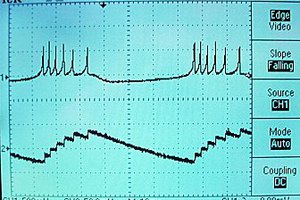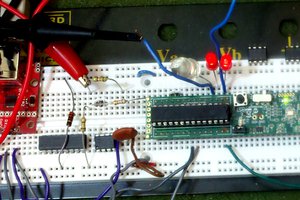Currently there are two parts to this project. The first is to write the simulation software, and the second is to write a simple program to plot the outputs with reference to the input times.
Basic Pulsed Neural Network Simulation
A simulation of a basic pulsed neural network, just slightly different than a traditional neural network.
 JangoJungle
JangoJungle



 Bruce Land
Bruce Land
 chris jones
chris jones
 sophi--e
sophi--e
Thank you! And thanks Bruce Land for the links! Looks like you're heading the direction I want to go with this: Hardware. That's great! Good work!